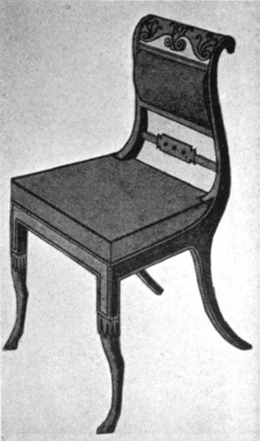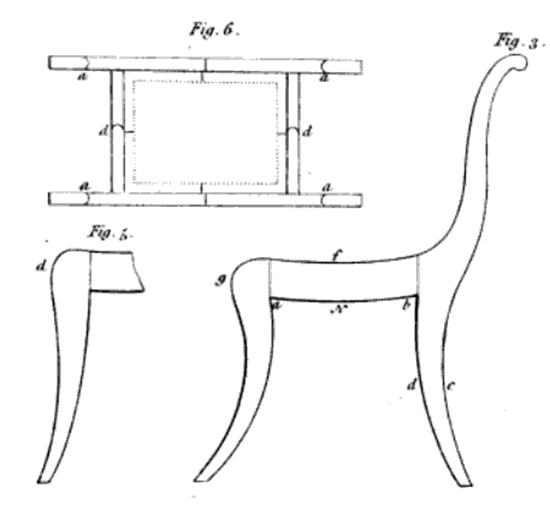The Trafalgar chair
The name
 On 21 October 1805 the British Royal Navy engaged combined fleets of the French and Spanish navies off Cape Trafalgar (Spain). Despite being outnumbered, Admiral Nelson’s ships fought bravely and unconventionally. This battle became one of the greatest naval victories of the British empire. The word Trafalgar got to be so popular that some British furniture makers decided to apply it to a recently developed chair style. First use of the term was as early as 1808. Naturally there was no reason whatsoever to link the Trafalgar chair to a piece of furniture, but it should be noted that the Empire style prevalent in France at the same time was named so to commemorate the achievements of another general, Napoleon. The consensus among historians is that Empire chairs were designed to suit military tastes and Trafalgar chairs share many of the qualities found in its continental counterparts: they are rigid, not particularly comfortable and their backs do not follow the natural curvature of human spine. These chairs are ideal for an officer’s upright stiff posture.
On 21 October 1805 the British Royal Navy engaged combined fleets of the French and Spanish navies off Cape Trafalgar (Spain). Despite being outnumbered, Admiral Nelson’s ships fought bravely and unconventionally. This battle became one of the greatest naval victories of the British empire. The word Trafalgar got to be so popular that some British furniture makers decided to apply it to a recently developed chair style. First use of the term was as early as 1808. Naturally there was no reason whatsoever to link the Trafalgar chair to a piece of furniture, but it should be noted that the Empire style prevalent in France at the same time was named so to commemorate the achievements of another general, Napoleon. The consensus among historians is that Empire chairs were designed to suit military tastes and Trafalgar chairs share many of the qualities found in its continental counterparts: they are rigid, not particularly comfortable and their backs do not follow the natural curvature of human spine. These chairs are ideal for an officer’s upright stiff posture.
The design
In terms of design, Trafalgar chairs follow the outlines of the ancient Greek klismos, which was well known from antique depictions on vases and well received as a part of the neoclassical tendencies of the early 19th century. Most notably, the seat rails of the chair seamlessly connected to its back on a single curve, much like the armrests connected to the back of the bergère marquise. A classic Trafalgar would have two back components: one is a flat slat and the other one is a bar, often fashioned to resemble a twist-rope. This last feature was a certain nod to the popularity that the British navy enjoyed back home even before Trafalgar, starting with Nelson’s victory in the battle of the Nile. The Trafalgar design also sported a loose seat pad. This made the construction simpler, the seat more durable and more practical because it was easier to maintain and reupholster.
The history of the Trafalgar chair
Although this style never really went out of fashion, its relative lack of comfort gave it a bad reputation. Nonetheless, even Duncan Phyfe, the famed American furniture maker, used the Trafalgar chair as one of his inspirations. One very important thing to remember is that the beginning of the 19th century marked the time when the same styles of furniture could be seen in mansions, as well as the homes of ordinary people. The difference, of course, was in quality and details.
